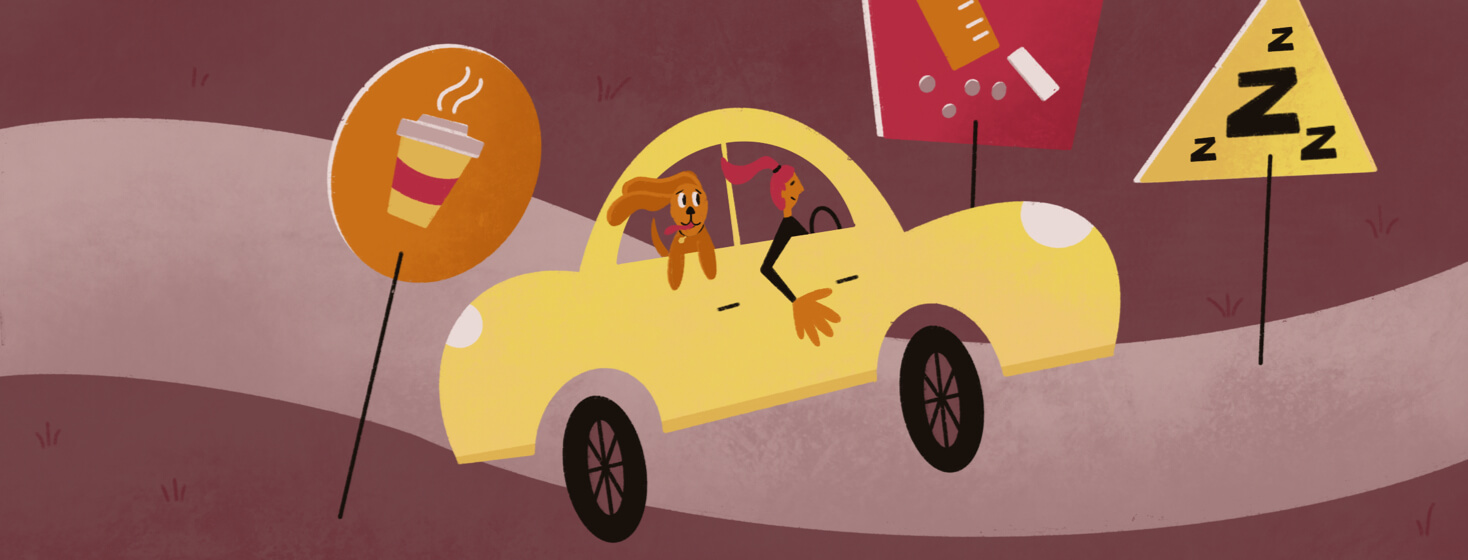I Drove Cross-Country With My Narcolepsy Service Dog: Here’s How I Did It
I recently made a big move, and I decided that I needed to do the drive there myself for a variety of personal reasons. With my narcolepsy service dog, duffel bag, and sleeping mat (more on that later) in tow, I started the 1,354.9-mile trip.
Packing up my car buckling up — me and my service dog
I packed up my trusty Honda and set up a designated napping station in the back. Since my service dog wears a crash-tested (but not entirely approved) Kurgo harness, she requires being buckled into a seatbelt. This helps mitigate the risk of her getting lost or injured in the event of a car accident.
Securing your dog during travel not only helps keep them safe, but yourself as well.
Setting up a napping station for safe car naps
For the napping station, I simply laid down one of the seats next to my dog. I then unrolled my yoga mat, stretching it from the back of my car to the area next to my service dog’s seat. This created a sort of cushion against the lumpy, hard surface that is my car floor. I’d learned how necessary a cushioned surface was the last time I made a napping station in my car!
I then topped the yoga mat with my blanket and pillow. I chose to use the blanket and pillow that I typically use in my normal bed. I find that it calms me down unconsciously to have familiar sensations washing over me as I try to nap.
Scheduling naps on my long drive
I took naps every two hours while driving. This means that for every hour spent in the car, I was sleeping in the back of it for 15 minutes! I found it necessary to do these naps in order to promote safety while driving with narcolepsy. With all of the road I had to cross, I needed every ounce of wakefulness I could get.
This included taking caffeine pills throughout the experience, which I try not to do normally for a few reasons.
Using caffeine to stay awake can increase anxiety
On my cross-country drive I was taking around 100mg of caffeine for every two hours of driving, I’m afraid to say. My heart rate was not happy with me, and my anxiety was through the roof!
Stimulants tend to have these effects on my body, which is unfortunate for me – a person who suffers from chronic narcolepsy.
Adhering to my treatment plan with medications
I made sure to take my Wakix (non-stimulant prescribed narcolepsy pills) and venlafaxine (anti-depressant and cataplexy suppressant) at least 2 hours before hitting the road each morning.
It is important for me to allow my prescribed medications to kick in before driving. This ensures that I am adhering to my doctor’s treatment plan that allows me to drive with my condition. Without my medications, I am unable to drive due to my severe cataplexy and sleep attacks!
Have you ever had to drive a long distance with your narcolepsy in tow? Have you made a long trip with a service dog? Let us know in the comments below!

Join the conversation